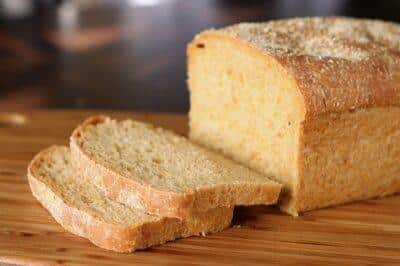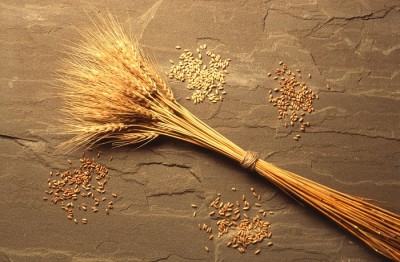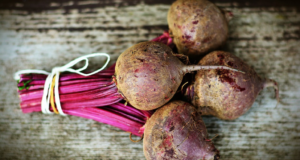Does wheat form a significant portion of your regular diet? It is hard to keep track of our actual amount of consumption, simply because this grain appears in so many different forms and different names in the processed foods that have become our staples.
While bread, noodles and pasta are obvious wheat products, almost all off-the-shelf food items, including chocolates, potato chips and many types of beer, contain wheat, too. Those diagnosed with celiac disease are sensitized to this issue, and learn to scan the food labels for words such as:
- Starch
- Stabilizers
- Natural flavoring agents
- Emulsifiers
- Hydrolyzed vegetable proteins
- Plant proteins
- Caramel
- Malt vinegar
Celiac disease is not new. Known to have been around for at least 2,000 years, this condition was then known as “failure to thrive.” But its relation to wheat, or particularly the wheat protein gluten, was discovered only in the 20th century. The disease is characterized by gastrointestinal problems, malnutrition, and a plethora of other seemingly unrelated symptoms, ranging from growth problems and mood swings to eczema-like skin allergies. Celiac disease has worldwide distribution, but its prevalence is notable in areas where wheat is the main staple grain.
One percent of the US population suffers from it, but less than 20 percent of the cases get diagnosed.
New Survival Seed Bank™ Lets You Plant A Full Acre Crisis Garden!
Researchers lately have come to the conclusion that celiac disease occurs in people who are genetically predisposed to it, somewhat absolving wheat. But they also acknowledge the increase in the incidence of “celiac-like antigen-induced mucosal changes related to gluten sensitivity” that does not fall under the ambit of celiac disease. Medical jargon aside, this simply means that the wheat protein gluten can bring about changes in the inner lining of our intestines whether we are genetically predisposed to celiac disease or not.
As a matter of fact, many if not all of us suffer from some effects of gluten sensitivity because, scientists say, our bodies are not programmed to digest this protein. It considers gluten an alien substance that shouldn’t be part of our diet. The history of humanity throws light on why this is so.
The place of wheat in history
Wheat has been farmed for around 10,000 years, originally by Babylonians, but later traveling to other parts of the world, replacing their indigenous staples to some extent. If it is rice that suffered from the onslaught of wheat in Asian countries, we know that wheat had no place in the Native American diet until European settlers introduced it on the continent.
Whatever the downside of wheat, its role in alleviating food scarcity among the burgeoning world population cannot be ignored. Population explosion, and the increased need for cheaper nutrition, may well be the reason behind the development of modern varieties of wheat, which have more protein content than either rice or corn, the other two leading staple grains.
What’s wrong with modern wheat?
Continuous selective breeding and hybridization techniques have changed the nutritional profile of this grain so much so that it is a far cry from its wilder counterpart farmed by our ancestors. It is, then, not very surprising that the modern cultivars of wheat are unable to survive in the wild.
Demand from the food processing industry favored the cultivation of hard wheat varieties that have higher gluten content. This protein gives elasticity to the bread dough and makes spongy and porous breads. A full 95 percent of the wheat cultivated is the bread wheat of the species Triticum aestivum.
New All-Natural Capsule Protects You From Dangerous Toxins And Pollutants!
Significant changes in the genetic makeup and nutritional content of the grain have happened only in the last century. Deliberate artificial selection of genes to increase growth rate, yield, and keeping quality of the grains resulted in the concentration of substances that are less favorable to our genetic makeup. Large-scale cultivation that we call the “Green Revolution” has necessitated the use of herbicides, pesticides and chemical growth modifiers, introducing still more hostile substances into our diet. Irradiation of harvested grains add to it, not to mention other chemical processes they undergo before appearing as familiar foods on our plates.
Bursting the whole-grain myth
The recent rise in autoimmune diseases, obesity and diabetes is blamed on the use of refined white flour. Consequently, the use of whole wheat flour is promoted as a healthier alternative. The call to increase the fiber content in our diets also saw a renewed interest in whole wheat products, which have become a major money spinner for food processing industries. But whole wheat does not reduce the adverse effect of gluten in any way. And when we have excellent sources of fiber in fruits and vegetables that deserve greater presence in our diet, why do we need fiber from grains at all?
New Natural Fertilizer Doubles Garden Production!
What makes wheat addictive?
The high carbohydrate content of all grains, including wheat, causes a sudden sugar spurt, particularly of glucose, in the blood. Glucose being the main food of the brain, it loves this “intoxicating” extra supply, and makes the body yearn for more. Apart from this, wheat also contains gliadin, which is known as the “toxic fraction of gluten.” Its derivatives are believed to have an addictive quality similar to that of morphine, complete with withdrawal symptoms. But instead of causing a “high” like the opiates, it triggers hunger in us. You can see the vicious cycle here.
Eliminating wheat from the diet
People with celiac disease avoid wheat in all forms and find their symptoms subsiding. Those without the disease also benefit significantly, with a perceptible reduction in allergies, bodyweight, belly fat, insulin resistance, and even headaches and mood swings. If you still need your carbohydrate fix, go for gluten-free grains like rice, buckwheat and oats.
Better still, you can cut out all types of grains from your diet and switch to root flours from potato or tapioca or nut flours from almond or coconut in your recipes. Our hunter-gatherer ancestors didn’t have much to do with grains anyway, barring the occasional chewing of a few kernels while waiting in the tall grass by the watering hole for some game to appear. Along with animal proteins, fruits and roots might have constituted the major portion of their diet until they started farming.
Do you try and avoid wheat? Why or why not? Share your thoughts on wheat in the section below:
 Off The Grid News Better Ideas For Off The Grid Living
Off The Grid News Better Ideas For Off The Grid Living






